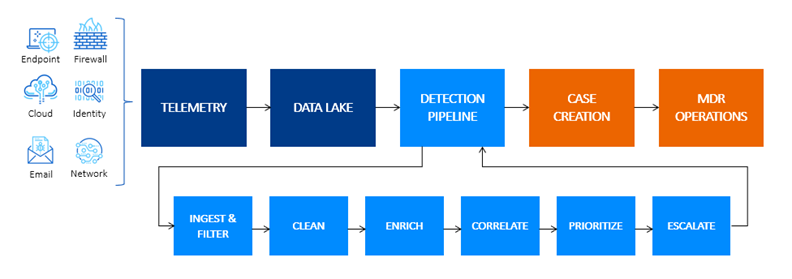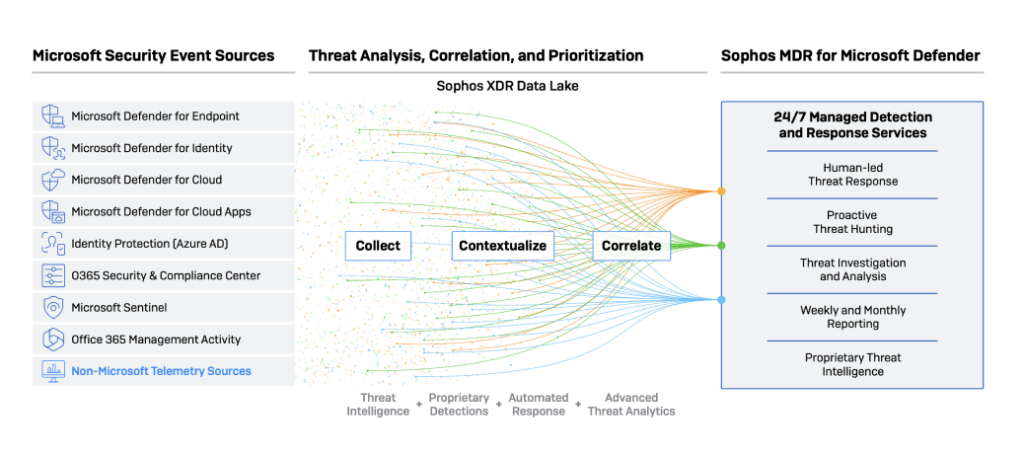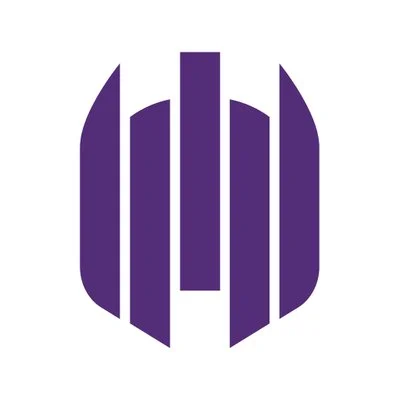Managed Detection and Response (MDR) services have become a popular solution for IT teams who need to improve their cyber security strategy without hiring multiple highly skilled professionals. But what exactly is MDR and how does this service protect organisations from the latest security threats?
Having a robust approach to cyber security is the cornerstone of any IT department worth its weight in salt. As we predicted earlier this year, 2023 has seen a continuation in the rise of complex and targeted cyber attacks on organisations across the UK. Most recently, the NHS became the latest victim of criminals when two ambulances were left without access to patient records due to hackers compromising one of the health services’ key suppliers.
No matter how big or small your organisation is, cyber security is having to become more complex simply to keep up with the ever changing threats coming from cyber criminals, which in turn is creating a massive headache for IT managers, especially those with limited resources.
So how can you address the gap in your cyber security operations without needing to hire a team of highly skilled (and highly paid) security professionals?
Well if you can’t do it in house, your next best option to achieve around-the-clock threat monitoring and remediation would be to explore making use of a robust Managed Detection and Response (MDR) service.
What is MDR?
Managed Detection and Response (MDR) is a fully managed security solution that organisations can use to bolster their security operations. An MDR service gives you access to a team of experts who will continually monitor your network, endpoints and cloud infrastructure to hunt down any signs of cyber threats on a 24/7 basis. As soon as any threats are found, the MDR team will act immediately to respond.

How does MDR prevent security threats?
A Managed Detection and Response (MDR) service effectively provides customers with the functions of a Security Operations Centre (SOC), delivered remotely by a team of experts, taking the pressure off of already stretched IT teams and delivering the peace of mind that your cyber security is being fully taken care of.
There are a range of key features which come with the most reputable MDR services, and are delivered by many notable names in the industry, such as Sophos and Crowdstrike. These features include:
- Threat detection & monitoring
- Endpoint visibility & protection
- Network traffic analysis
- Threat hunting and investigation
- Incident response & remediation
- 24/7 Security Operations Centre (SOC)
- Threat intelligence integration
- Reporting & analytics
- Continuous improvement & collaboration
The key aspect that sets MDR apart from other security solutions is the approach that is taken towards gathering security insights. By gathering comprehensive telemetry from across the entire security environment - including signals and alerts from endpoint, firewall, cloud security solutions and third-party security technologies - this ensures the team of MDR cyber security analysts are fully informed so they can prioritise, detect and actively respond to any suspicious activities before they can cause damage.

What are the key benefits of using an MDR service?
Reduces risks and costs associated with remedying cybersecurity incidents and breaches
Organisations that look to build their own security operations programme will quickly realise the difficulty and cost of building a true security operation centre (SOC) in house. Even a mid-sized organisation would need at least four cyber security analysts to maintain 24/7/365 coverage. Larger organisations would need several more highly paid team members. Organisations still need to factor in the cost for team managers and engineers to customise and maintain the team’s tools. And this is just the cost of hiring team members; the budget would still need to allow for the tools the team will need, such as endpoint protection, network protection, endpoint detection and response (EDR), SIEM, workflow processing (SOAR), intelligence feeds, and more.
Frees up internal IT resources
Most organisations already struggle to conduct their own threat hunting, incident response, and security health checks. By outsourcing detection and response operations, an MDR service allows internal IT teams to focus on the tasks that match their skill set. For more advanced organisations, the addition of MDR also allows teams to offload much of the day-to-day security operations tasks.
MDR integrates with your existing cybersecurity tools
A robust MDR solution will also integrate with the tools already present within an organisations’ existing security operations. Many MDR service providers will either provide the necessary technologies or make use of telemetry and data from security solutions that are already deployed, such as in the example below demonstrating the integrations between Sophos’ MDR solution and Microsoft Defender:

Improves threat detection and response times through consistent monitoring
MDR services should have the required expertise to detect and respond to any type of attack. Not only are they staffed with professionals who are notoriously hard to hire, train, and retain, a properly staffed MDR service should also offer continuous coverage. This means that they’re constantly monitoring your environment and can respond to any potential threat at any time. This includes weekends, holidays, and the middle of the night.
Who provides Managed Detection and Response (MDR) services?
Over the past few years, MDR services have rapidly increased in availability, with some of the top names in cyber security now providing a range of comprehensive Managed Detection & Response services.
According to Gartner, in 2023 the top 5 best rated Managed Detection and Response (MDR) service providers are:

1) Sophos Managed Detection and Response
- Comprehensive threat detection and response services.
- Integration with their security ecosystem for seamless operations.
- 24/7 monitoring and real-time threat analysis.
- Proactive threat hunting and AI-driven insights.

2) SentinelOne Vigilance Respond
- Advanced AI-powered threat detection and response.
- Continuous monitoring and rapid incident response.
- Automation and autonomous endpoint protection.
- Extensive threat intelligence for proactive defence.

3) ReliaQuest Managed Detection and Response
- Unified threat detection and response across various tools.
- Enhanced visibility and optimised security operations.
- Continuous security improvement through proactive threat hunting.
- Integrated platform for streamlined incident management.

4) Arctic Wolf Managed Detection and Response
- Concierge-style MDR with a dedicated security team.
- Real-time threat monitoring and incident response.
- Customised security recommendations and risk reduction.
- Proactive threat detection and compliance support.

5) CrowdStrike Falcon Complete
- Cloud-native MDR with AI-driven endpoint protection.
- Real-time threat intelligence and behavior-based detection.
- Immediate response and containment of security incidents.
- Scalable security services for diverse business environments.
What to look for when choosing an MDR provider
With all this choice comes wide variation, so it’s important to know what to look for so you can pick the best provider for your specific needs. After all, watertight cyber security is crucial to protecting your organisation's sensitive data and infrastructure. Here's a few steps you can take to help you decide:
1) Assess Your Requirements:
Before starting your search for an MDR provider, conduct an internal assessment to identify your organisation's specific security requirements, such as the type of data you handle, your industry's compliance standards, and the size and complexity of your IT environment.
2) Expertise and Reputation:
Look for MDR providers with a strong track record of successful cyber security services and a team of experienced professionals. Research their reputation in the industry, read customer reviews, and seek referrals from trusted sources to gauge their reliability.
3) 24/7 Monitoring and Response:
Cyber threats can occur at any time. Ensure the MDR provider offers 24/7 monitoring and response capabilities. Real-time threat detection and immediate response can significantly reduce the impact of potential breaches.
4) Threat Intelligence and Analysis:
An effective MDR provider should have access to up-to-date threat intelligence and advanced analytics tools. Their ability to analyse and understand emerging threats is crucial for proactive defence.
5) Incident Response and Remediation:
Inquire about the provider's incident response process. They should have a clear plan for containing and remediating cyber security incidents promptly, minimising damage, and restoring normal operations.
6) Scalability and Flexibility:
Your business is likely to grow, so choose an MDR provider that can scale their services to meet your evolving needs. They should also be flexible enough to adapt to changes in your IT infrastructure and security requirements.
7) Integration and Compatibility:
Ensure that the MDR provider's services can integrate seamlessly with your existing security infrastructure and tools. Compatibility and interoperability are essential for optimising cyber security operations.
8) Compliance and Certifications:
If your organisation operates in a regulated industry, verify that the MDR provider complies with relevant industry standards and holds necessary certifications. This ensures they follow best practices and meet strict security requirements.
9) Transparent Reporting and Communication:
Clear communication is vital when dealing with cyber security incidents. Choose an MDR provider that offers transparent reporting, regular updates, and easy-to-understand insights to keep you informed about your security status.
10) Proactive Threat Hunting:
Beyond detection, a proactive MDR provider will actively hunt for potential threats, even if no alarms have been triggered. Proactive threat hunting can help identify hidden or sophisticated attacks.
11) Cost and Value:
Finally, consider the overall cost of the MDR service and the value it provides. Remember, investing in a comprehensive cyber security service is an investment in your organisation’s long-term security and reputation.
What's the best way to determine if a Managed Detection and Response service is right for your organisation?
Whether you’re already considering an MDR security solution or you’re just getting started, choosing to outsource your security operations can at first seem like a daunting task - but you don't have to do this alone. Our team of friendly and experienced security consultants can support you with selecting the best service for meeting your specific security needs and objectives. Give us a call or drop us an email and we’d be more than happy to help you secure your organisation - and your peace of mind - with a robust Managed Detection and Response solution.






